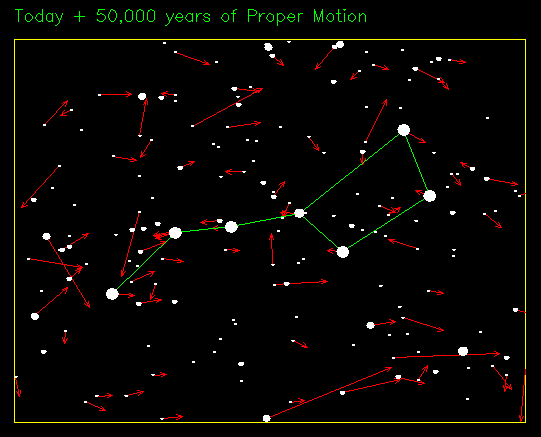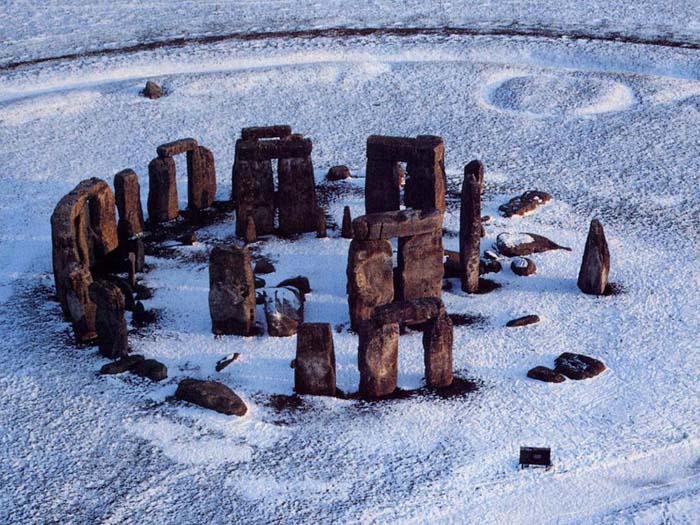|

Foreground
or
Background?
By
John Townley, February 2011
The
recent media kerfuffle about the Zodiac constellations no
longer coninciding with the precessing tropical
signs of the same
names put a
public habituated to knowing their Sun-signs into an uproar of
insecurity.
Astrology-haters (and there are lots) trumpeted ignorantly that this
proved
there was nothing to astrology, and Sun-sign fans wondered if perhaps
they
were right. Tropical astrologers hunkered down defensively, while
siderealists
and Vedic astrologers took it as a backhanded confirmation of their own
system,
albeit by those who would inclusively debunk them, too. As a cultural
phenomenon, it demonstrated a)
that astrology is more popular than ever, as practically everybody
knows their
tropical Sun-sign and identifies with it enough to care if it
might be
wrong, and b)
that very few
(including many woefully uniformed journalists) really know much
more than that. End of story.
But it
does highlight the
differences, mainly between India
and the West, between astrologers who use the tropical Zodiac
(based on
30-degree
divisions of the Earth's orbit starting with the vernal equinox) vs.
those who
use the varying-size background constellations through which our
orbit passes.
Outside of the universal justification of “it
works” (which anything seems to
if you properly manipulate it), what are the real reasons for choosing
one
system over another, and what are the physical implications of each?
All agree
that the forces involved in astrology come from
the sky, in the form of the planets
themselves (whether the nature of that force be gravitational,
electromagnetic,
or spiritual) and that those forces can be additive (as with the
conjunction),
supportive (as with trines and sextiles), or conflicting (as with
squares and
the opposition). All also agree that where the planets fall by house is
strictly a local matter here
on earth, arising from your point of view on the ground from this
planet. There is even general agreement on which each house means. The disagreement
arises when you have to
decide where the qualitative filter
of the
signs comes from. Is it the
variable
background behind
the planets, the multi-directional, shifting backdrop of the
universe, or is it an in-between
artifact of the Earth’s own precise motion around the
Sun, measured from the direction of our own tilt, and which also
determines
our seasons?
Basically, does it come down from
up
there, and behind the planets,
or up from down
here, in front of them?
Essentially, are they background or foreground? Let’s look at the
implications of each.
Constellations:
the
view from the East
If our
choice for signs is the
constellation background,
then they aren’t a filter at all, because the planetary
energies don’t pass
through them on the way here. Representing the universe at large, of a
much longer-lasting nature than
anything in the life of this much-briefer solar system, they should
totally
trump the planets in their importance. But, in actual application, we
know they
don’t, but rather the planets are where the primary strength,
meaning, and
action is. Not a good argument for the sidereal/Vedic point of view.
Further,
although the sky background is eternal, the constellations themselves are
temporary –
including
those that lie along the ecliptic. Over the millennia, constellations
change
their shape, width, and height, and depth, so that the ones we
recognize today
don’t much
resemble what was in that patch of the sky only 50-100,000 years ago,
nor will
they be what they are now only 50-100,000 years hence. The
widely-divergent “proper motion” of
individual stars that make up the constellations cause their apparent
shapes to become virtually unrecognizable over a relatively short
period, even
when compared to how
long life has been here on Earth. Constellations actually change vastly
more in a few
hundred thousand years than do the still-settling orbits of our local
planetary
system.

Constellations
are relatively short-lived, morphing out of shape through their stars'
diverging proper motion in a few hundred thousand years, whereas
tropical signs are forever. To see an illustrative animated
example click
here!
Another problem
with constellations is that they vary
in size,
from fairly large to quite
small, meaning the Sun takes much longer to pass through some than
others, and
in some cases it may actually leave
and then reenter
the boundaries of the same
constellation within a few days, because the ecliptic doesn’t
pass through the
middle of all the Zodiac constellations but only grazes some. Not a
very
precise set of affairs, and one that morphs considerably over a couple
of
hundred thousand years, positively fickle compared to the planets
themselves.
If they represent a truly overarching cosmic background, then where
that
background begins and ends, or is demarcated throughout, is very
uncertain and
not as footsure as the motions of our local planets themselves.
A third problem
with a constellation-driven Zodiac is that the shapes and meanings
of the
constellations are determined by a fertile imagination projecting
images onto
sets of
points determined by stars which generally aren’t in the least
related to each
other in real space. And, those projected images vary from culture to
culture,
along with their implied meanings. For instance, nobody thought the
constellation Gemini looked like twins before the Gemini myth arose,
and that
goes for all constellations named after relatively-recent
Greco-Roman myths.
Others, named after animals, are often interpreted as being different
animals by
different cultures. The largest, which are off the ecliptic (as most
are) vary
from zoological to anthropomorphic, to physical objects
– that
big, Northern hooked constellation with two stars that point toward the
current
pole star is alternately called the Great Bear, the Big Dipper, the
Seven Sages,
the Plough, Helike (the Turning), Otava (salmon weir), Pucwan
(crustacean), and
more, depending on culture and time period. Any central meaning among
these, for this or
any other constellation, is difficult to resolve.
Limited Uses...
This
doesn’t mean
constellations can’t have symbolic and
even predictive meaning, at least within the lifetimes of multiple
generations
of local astrologers. For example, the Hyades star cluster, named for a
weeping sisterhood
of nymphs, was associated by the ancient Greeks with rain, as their
heliacal
setting presaged the rainy season. Changing weather patterns and the
precession
of the equinoxes make that no longer the case, but they were a reliable
source
of rain prediction for astrologers for hundreds of years, and those
starcasters
cannot be faulted for noticing and using the fact. Indeed, the way
Indian (Vedic, sidereal) astrology is used owes much to local traditions
such as this, used with much success over generations of practitioners.
It speaks not to any enduring qualities these constellations might
have, but to briefly-consistent, though passing, event series that move
on and change,
albeit gradually within the context of a single human’s
lifetime. If there is any one
reason Indian astrology works so well, it may be because it is so
closely
rooted in tightly-held and monitored local and cultural tradition,
rather than
in more general astronomical principles. This makes it a mix of
planetary, seasonal,
cultural, and historical lore that is stronger
in transient
specifics than it is in
enduring generalities, quite the opposite of the Western astrological
tradition. Does
it
“work”?
You bet it does, not for broad structural reasons, but by reasons
of intense local and situational observations and traditions. When
arbitrarily
applied to a different culture and another time, however, it fares less well,
as might be
expected.
 
Indian
astrologers favor constellations
as sky background, whereas Western practitioners see signs
as inner, orbital filters
Tropical
signs: the
view from the West
Tropical
Zodiac signs,
as opposed to their constellation cousins, are more precisely-defined
creatures.
Beginning at the vernal point, where the Sun is at the beginning of
spring,
they are twelve exactly equal
thirty degree demarcations of the ecliptic
circle (the Earth's orbit). They are, by definition, invariable,
since well before the year had 365 days
in it and well after -- they last, unchanged, as long as the Earth remains in the solar
system. They are a
simple extension of the Earth-Sun axis,
oriented by where the tilt of the Earth points. They are single-dimensional,
segments along a line, not pictures taking up space in the sky.
Although they are named
after the constellations they roughly coincided with when written
historical
astrology began in early Classical times, their meanings
don’t
always quite fit the names
they have, still retained by tradition but increasingly inconvenient.
Why,
for instance, would a cold, dry air sign like Aquarius be named after a
water
bearer? What has a virgin (Virgo) to do with the full
ripeness of late
summer and an obsession with detailed experience? Virgins are, if
anything,
quite the opposite. And are horrid, scuttling scorpions noted for their
deep
sexuality, simmering passion, and ability to construct and lay plots,
with an elephant’s memory for
past wrongs? Hardly. And so on. The tropical signs, ultimately, might
be more
easily understood without their doubtful mythological and zoological
imagery and better labelled as what they actually are, with only classifications
for names: early,
middle, and late (cardinal,
fixed, and mutable) divisions of spring,
summer, fall, or
winter, based on the northern
hemisphere view.
If signs
are considered a filter
of planetary energy, the
tropical Zodiac fits the bill,
as it is the outward projection from the Earth
to the planets, so their energies pass through it on their way down to
inhabiting the houses. And there is nothing
ambiguous
about it, tropical signs being precisely
measured and equal. They are totally a structural projection,
however, so their local effects can and do vary across time and
cultures, to
which often-contradictory passages in Classical, medieval, and modern
astrology texts attest.
The contemporary experience of the practitioner and the culture still
profoundly
affect the specifics of both interpretation and prediction. Also of
note, tropical
signs are so Earth-centered that they have
no meaning
once you leave this
planet. In fact, every planet has its
own tropical Zodiac,
none convergent with
ours, depending on the direction of its tilt. But, in theory,
that’s as it should
be, if signs are qualitative filters for the energy of other planets
from
the view of just one. Also, in theory, a planet with no tilt, whose
axis was perpendicular to its orbit, would have no tropical Zodiac
at all. So it's possible that the degree of tilt is a determining
factor in the intensity and importance of a tropical Zodiac, and that a
sidereal background Zodiac (however changeable) is another affair entirely.

The
earliest astrology/astronomy, in Neolithic times, was primarily
concerned with the divisions of the tropical seasons
A
maturing, inclusive view...
With
this perspective, it’s easy to see why both Zodiac systems
have been in
use for as long as they have, even though one tends to be highly local
in effectiveness
and the other more broadly structural,
easy to use, and export-friendly. They both have something to offer,
but they're not either interchangeable or mutually exclusive. Planetary
positions in relation to the cosmic background tell you one thing, and
in relation to the Earth's seasonal structure quite another. They are
apples and oranges -- like the cultures that favor each, one yearns
toward eternal, fated destiny, and the other is about the colors of
now. The fact that we are fighting for control over
names based on outdated cultural
images
of mythological figures and animals is simply clouding the issue. The
fusion of the best of both systems, background
and foreground,
has already been underway in international astrology,
as the cosmic background message has increasingly been given over to
the individual fixed
stars (whose attributes tend
to be more similar cross-culturally and
pan-historically) while the definitions of signs themselves have been
increasingly coopted by the foreground tropical Zodiac system. In a
way, this may be a unifying
throwback to Neolithic
astronomy/astrology, where megalithic monuments
were primarily constructed to track the divisions of the tropical
seasons, while also monitoring individual, transiently important fixed
stars. Hopefully,
we may be getting back to earlier, more fundamental threads
that splintered, Babel-like, when Babylonian astrology
diverged Westward to Greece
and Rome and Eastward to Persia and India.
One nagging question about tropical
signs still remains, which
is: why should the meanings of Northern Hemisphere seasonal signs be
consistent
with times when it’s the opposite
season
down under? Australian astrologers
swear from personal experience that this is indeed the case, and that
they don’t reverse, so is there a physical explanation? Gaia
hypothesis fans
might suggest that the greater biomass
of the planet is, in fact, in the
Northern hemisphere, which might call the shots for the whole world
organism.
Maybe so, maybe no. But that's the making of a later article,
unto
itself…
Not
a
newsletter subscriber already? Subscribe
Free Here!
--
Breaking news from
around the globe, plus articles, reviews, it's all happening there,
changes daily...
|

